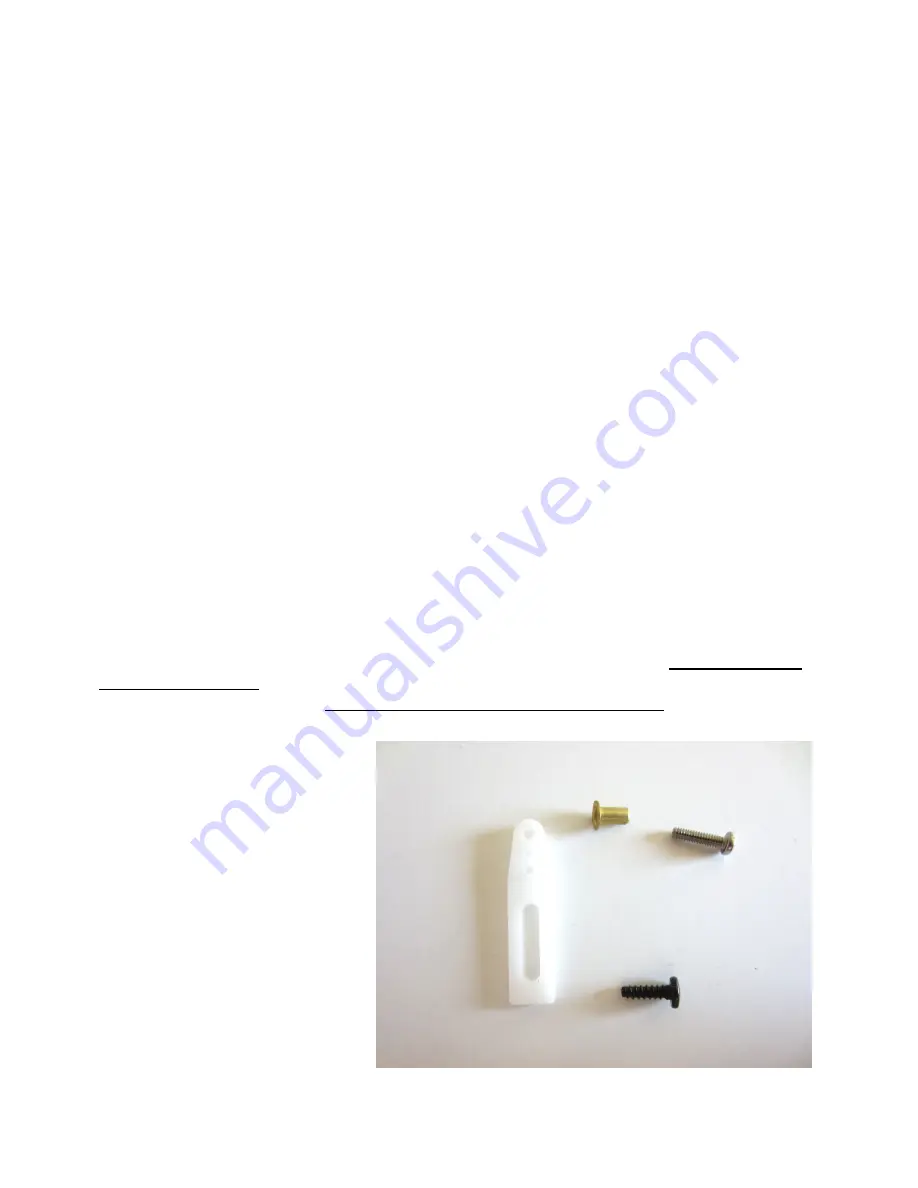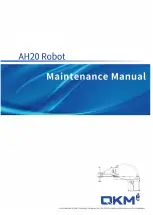
72 – Cricket Robot Documentation
Horn Assembly Parts:
Horn, Rivet from
Servo kit, 2-56 x 3/8”
screw, and original
horn screw.
Centering the Servos
Your servos are now electrically connected and you have a battery connection. When the
controller is turned on, it will center each servo to its middle position. You have no
mechanical connection between the motors and the legs so the motors will turn without
moving anything. This allows the motors to be centered in the correct position before we
install the control arms that will move the legs. If the motors are not centered before the
mechanical connection is made, the legs might be forced into a bad position possibly
damaging the robot.
Turn on your controller using the switch next to the batteries and the controller will center
the servos, make a beep, and then pause for a couple of seconds. During that pause, turn
off the robot. If you miss the pause; just turn the controller off and then on again. When
you hear the first sound, turn the switch off. This procedure allows us to center the servo
shafts to the correct position before attaching the servo horns which will be used to move
the control arms.
Installing the Servo Horns
Inside the accessories package for the Hitec 311 servos are extra horns. Horns are the
plastic pieces that screw onto the servo shaft. We will not be using the default horn which
comes attached to the servo. Locate the horn and pieces shown in the photo below. Two
of the horns have an extra-large hole drilled in the end spot and the third horn has an
extra-large hole in the third spot. The ones with the hole in the end are the right and left
horns and the other is the center horn. Each horn has a serrated and a smooth side.
The accessories package also has four rivets which are normally used for mounting the
servo. We will be using one rivet as a bearing point for each horn. On the right and left
horns, place a rivet through the 2-56 x 3/8” machine screw and screw it into the first hole
on the serrated side of the horn. On the center horn, place a rivet through the 2-56 x 3/8”
machine screw and screw it into the third hole on the non-serrated side of the horn.
Summary of Contents for Arduino Walking Robot
Page 1: ...Revision 1 0B Copyright 2015 Cricket Robot Documentation...
Page 8: ...8 Cricket Robot Documentation Top View...
Page 9: ...9 Cricket Robot Documentation Bottom View...
Page 10: ...10 Cricket Robot Documentation Front View...
Page 90: ...90 Cricket Robot Documentation Appendix A Schematics...
Page 91: ...91 Cricket Robot Documentation...
Page 92: ...92 Cricket Robot Documentation Appendix B Parts List...
Page 93: ...93 Cricket Robot Documentation...
Page 94: ...94 Cricket Robot Documentation Appendix C PC Board Layout All Layers Parts Layout...
















































